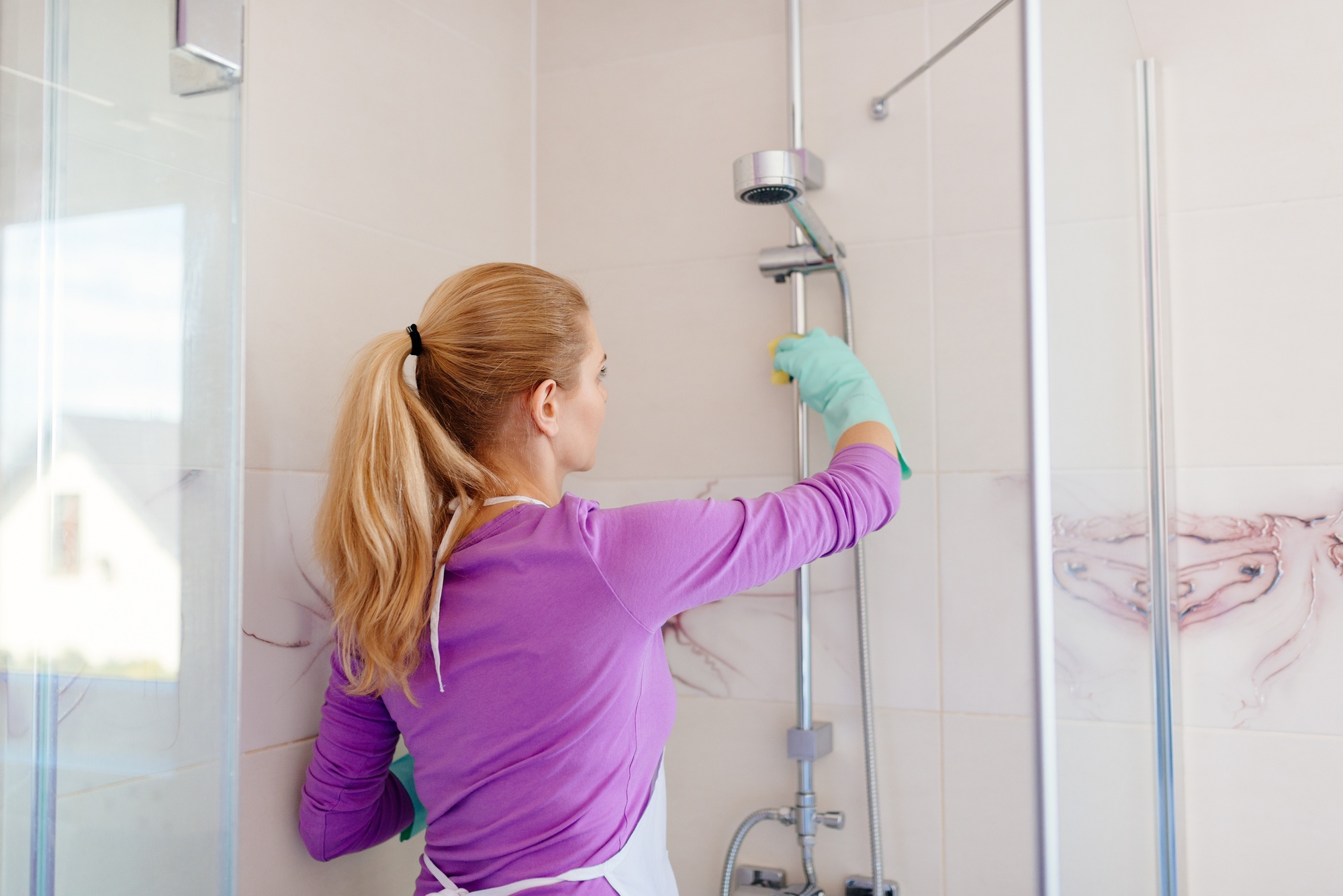
How To Deep Clean Your Shower In 6 Steps
Your shower, a sanctuary that awakens your senses each morning and helps you wind down at night, can quickly lose its appeal when grime, soap scum, and hard water stains take hold. Unfortunately, regular rinsing or scrubbing isn’t always enough to preserve a fresh and clean appearance. A thorough deep cleaning is a more effective solution.
This article outlines six practical steps to deep clean your shower and restore its pristine condition. Dive in to discover all the details!
1. Gather Your Cleaning Supplies
To achieve an effective deep clean, you need the right cleaning items. Fortunately, you don’t have to rush to the store for expensive cleaning products. Many effective cleaning agents may already be in your kitchen pantry.
Begin by acquiring an all-purpose cleanser. If you prefer a DIY approach, you can easily create a potent solution by mixing vinegar and water in equal parts. The vinegar’s acidity combats soap scum and mildew impressively. You’ll also require scrub brushes of various sizes – a larger one for broad surfaces and an old toothbrush for those hard-to-reach areas.
Additionally, consider having a squeegee on hand to clear excess water after cleaning, avoiding streaks and leaving your shower door and walls spotless. Microfiber cloths are excellent for wiping surfaces dry without leaving lint or streaks. It would help to stock up on baking soda and hydrogen peroxide to tackle tough stains. These versatile ingredients can be combined to create a powerful grime-fighting paste.
Preparing these tools sets the stage for a rewarding cleaning session.
2. Clean The Shower Door
Shower doors often endure the brunt of soap scum and hard water stains. Therefore, shower door cleaning is a top priority. Start by generously applying your chosen cleaning solution to the door. Whether you opt for an all-purpose detergent or the homemade vinegar solution, ensure it coats the entire surface. Allow the cleanser to sit for a few minutes. This pause, or ‘dwell time,’ allows the product to break down the grime, making your scrubbing task easier.
Afterward, take your scrub brush and gently but firmly scrub the door, paying extra attention to corners, edges, and tracks, where dirt often lurks. Don’t hesitate to apply more cleanser to stubborn spots.
Once you’ve addressed every area, rinse the door thoroughly with warm water to effectively remove loosened grime. Finally, grab your microfiber cloth and dry the door, ensuring a spotless and shiny finish.

3. Deep Clean The Shower Walls And Floor
The shower walls and floor are your next focus. These areas can accumulate soap scum and mold, especially if they’re tiled, demanding thorough attention. Spray your chosen detergent across all surfaces, allowing it a few minutes to penetrate the grime. Afterward, gently but firmly scrub the walls and floor using a large brush, ensuring every corner and crevice receives attention. For textured surfaces or tiles, use an old toothbrush. It would help to pay special attention to the drain and shower base, as they often harbor hidden grime and odors.
After a thorough scrub, rinse the surfaces with warm water. Lastly, use your microfiber cloth to wipe everything dry. Remember, leaving surfaces wet can encourage mold growth, undoing all your hard work.
Following these steps will restore the brightness and cleanliness of your shower walls and floor.
4. Focus On The Shower Head
Descaling the shower head is a critical yet often neglected part of deep cleaning. Over time, mineral deposits can accumulate, affecting water flow while leaving unsightly marks.
Begin by removing the shower head if it’s detachable. If it isn’t, there’s an alternative method. Prepare a vinegar solution in a bowl or a plastic bag. The mild acidity of vinegar is excellent for breaking down limescale and mineral deposits. Submerge the shower head in the bowl or attach the filled bag around the fixed shower head using a tie or elastic band. Allow it to soak for several hours, giving the vinegar ample time to dissolve the deposits.
After soaking, remove the shower head from the solution. Take an old toothbrush and diligently scrub away any remaining deposits. Be sure to clean the nozzles from which water exits the shower head. Finally, rinse thoroughly with warm water to remove traces of vinegar or loosened deposits. This process restores the shower head to a shiny condition and improves water flow.
5. Scrub The Grout
Cleaning the tile grout is vital during the deep cleaning process. Over time, grout can become discolored due to moisture, soap, and dirt. To tackle this, create a grout-cleaning paste by combining baking soda and hydrogen peroxide. Apply the paste onto the grout lines, allowing it to sit for some time, and then scrub vigorously using a toothbrush. Rinse with warm water to remove any residue left by the cleaning paste. This process restores the cleanliness and overall appeal of your bathroom.
6. Rinse And Dry
Thoroughly rinse the shower with warm water, ensuring that all residual cleaning products and loosened dirt are washed away. Once rinsed, take your squeegee and remove excess water from all surfaces, preventing streaks and water spots. Lastly, use a microfiber cloth to dry every surface. Drying prevents the growth of mold and mildew, common problems in moist environments like showers. In addition, a freshly cleaned bathroom means it’s ready for immediate use, saving you precious time and adding to the overall convenience of your daily routine.
Conclusion
Deep cleaning your shower doesn’t have to be an overwhelming task. With simple household supplies and a strategic approach, you can transform your shower from grimy to gleaming. Each step, from gathering the necessary cleaning supplies to the final rinse and dry, is crucial in achieving a spotless shower. Remember, a clean shower looks great and contributes to a more enjoyable and refreshing bathing experience.




